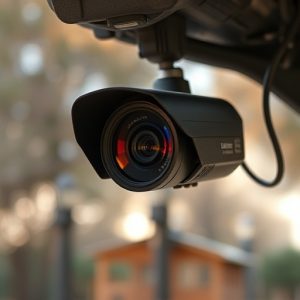Mastering Optical Sensor Detection: Optimizing Battery Life Spy Camera Performance
Optical sensor technology has transformed security and consumer electronics, especially in battery-p…….
Optical sensor technology has transformed security and consumer electronics, especially in battery-powered spy cameras. Professionals conduct rigorous Battery Life Spy Camera Comparison tests under simulated real-world conditions, evaluating resolution, sensitivity, and battery life. They use advanced equipment to monitor power consumption, aiming to identify models with extended battery durations for continuous surveillance. Optimizations include sensor calibration, algorithm updates, machine learning, sleep modes, dynamic shutter speeds, and data compression to enhance camera efficiency without compromising performance in these spy camera comparisons.
“Unleash the power of optical sensor technology with our comprehensive guide on professional detection methods. In an era driven by covert surveillance, understanding and optimizing battery life in spy cameras is paramount. This article delves into the fundamentals of optical sensor detection, offering a detailed exploration of techniques used to enhance accuracy and efficiency. From basic principles to advanced strategies, we provide insights crucial for professionals seeking optimal performance in Battery Life Spy Camera Comparison.”
- Understanding Optical Sensor Detection: Unveiling the Basics
- Professional Methods for Battery Life Spy Camera Comparison
- Optimizing Performance: Techniques to Enhance Sensor Accuracy and Efficiency
Understanding Optical Sensor Detection: Unveiling the Basics
Optical sensor detection is a sophisticated technology that has transformed various industries, from security and surveillance to consumer electronics. At its core, it involves using sensors to capture and interpret light, enabling devices to see and make sense of their surroundings. These sensors are particularly crucial in spy cameras, where they play a pivotal role in enhancing privacy, security, and surveillance capabilities.
When discussing optical sensor detection, especially for hidden or compact cameras like battery-powered spy cameras, the focus often shifts towards key factors such as resolution, sensitivity, and—most notably—battery life. In the competitive market of spy cameras, consumers frequently compare these devices based on their optical performance and how long they can operate undetected thanks to efficient battery life. This comparison is essential for professionals and enthusiasts alike who prioritize discretion and reliability in their surveillance setups.
Professional Methods for Battery Life Spy Camera Comparison
When comparing battery life in spy cameras, professionals often employ meticulous testing methods. These include simulating real-world scenarios and evaluating camera performance over extended periods. One standard approach is to conduct a battery life spy camera comparison test, where multiple models are assessed under consistent conditions. This involves capturing a series of images or videos at various resolutions and intervals to mimic typical usage patterns. By examining the time it takes for each camera’s battery to deplete, professionals gain valuable insights into their respective battery life capabilities.
Moreover, advanced testing equipment and software can be utilized to monitor power consumption in real-time. This data is then analyzed to determine not only the overall battery life but also the efficiency of the camera’s components. In the context of a Battery Life Spy Camera Comparison, professionals seek models that offer longer durations between charges, ensuring continuous surveillance without frequent interruptions due to drained batteries.
Optimizing Performance: Techniques to Enhance Sensor Accuracy and Efficiency
Optimizing Performance involves employing techniques that enhance both the accuracy and efficiency of optical sensors, particularly in applications like battery life spy cameras. One key method is calibrating the sensor to minimize errors and maximize its dynamic range, ensuring it captures high-quality images across various lighting conditions. Regular updates to sensor algorithms can significantly improve performance; these updates often incorporate machine learning models that adapt to different environments, enhancing both speed and accuracy.
Moreover, power management strategies play a crucial role in extending battery life for spy cameras equipped with optical sensors. Techniques such as sleep modes, dynamic shutter speeds, and efficient data compression reduce energy consumption without compromising the camera’s effectiveness. In the context of a Battery Life Spy Camera Comparison, these optimizations become vital; they ensure that the devices can operate for longer periods, gathering more data or surveillance footage without frequent recharging.
Optical sensor detection has evolved significantly, offering advanced capabilities in modern spy cameras. The article has explored essential techniques like understanding basic principles, comparing battery life in various models through meticulous testing, and optimizing performance for enhanced accuracy and efficiency. By integrating these professional methods, users can make informed choices, ensuring the best-performing optical sensors for their specific needs, especially in the context of a Battery Life Spy Camera Comparison.


